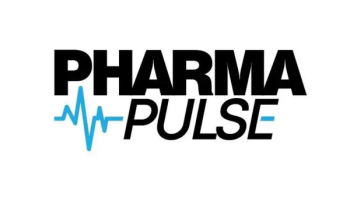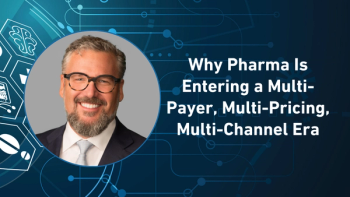Key Takeaways
Initial pricing decisions are critical. The first set wholesale acquisition cost heavily influences long-term gross-to-net (GTN) outcomes, and treating it as a short-term tactic instead of a strategic anchor can lead to major revenue pitfalls.
Statutory modeling must come first. Instead of prioritizing commercial PBM contracts, manufacturers should model GTN impacts starting from government payer obligations (e.g., Medicaid, 340B, IRA provisions) to avoid future rebate-driven net revenue collapse.
GTN strategy is now a cross-functional imperative. Sustainable pricing requires enterprise-wide governance, with mature GTN frameworks and strategic foresight becoming essential to navigating an increasingly regulated and payer-driven market.
Welcome to the fifth installment in our “Popping the Gross-to-Net (GTN) Bubble” series. In Parts I through IV, we explored the structural roots of the GTN problem, what inflates the bubble, how drug manufacturers and vendors contribute to its expansion, and the extreme consequences for patients and the system when pricing goes unchecked. In this chapter, we pivot toward solutions—specifically, how forward-thinking pricing models can realign incentives and create more sustainable revenue paths for branded pharmaceutical products.
The first price is the first impression that never goes away
In pharmaceutical commercialization, pricing decisions often yield short-term gains while carrying long-term consequences. The initial wholesale acquisition cost (WAC) is more than just a sticker price—it anchors every downstream discount, rebate, and regulatory calculation. Whether the brand succeeds or stumbles often hinges on that very first pricing decision.
There’s truth in the adage, “You never get a second chance to make a first impression.” Pricing is no exception. Yet, too many manufacturers still treat WAC as a tactical placeholder rather than a strategic move. Historically, global consultancies such as Simon-Kucher guided launch pricing based on international reference markets. But over the last 10–15 years, US-specific complexities—particularly those related to GTN and statutory obligations—have reshaped the pricing function. This shift has demanded deeper domestic expertise and more rigorous financial modeling, particularly as the pricing environment has become increasingly volatile under regulatory and payer scrutiny.
The backward logic of ‘big first, statutory later’
Many pharma pricing teams still begin by modeling for commercial success—especially how to win preferred formulary placement or tiering from commercial insurers-pharmacy benefit managers (PBMs). On the surface, the logic seems sound: start with the greatest number of lives managed and work downward from there. PBMs manage access for millions of lives across commercial, Medicare, and Managed Medicaid, and negotiate aggressively on behalf of plan sponsors. From a volume lens, commercial can appear paramount.
However, that approach is deeply flawed—and outdated.
Government programs, including Medicare, Medicaid, and the Veterans Health Administration, now account for the majority of US covered lives, averaging over 55% across most drug classes. Ignoring the statutory components of GTN—Medicaid rebates, 340B discounts, Best Price triggers, and Federal Supply Schedule benchmarks—can turn an initially “winning” commercial contract into a long-term net price catastrophe. Rebate structures that seem sustainable on paper can implode once government formulas catch up with reality.
A better starting point: Model backward from statutory floors
Instead of beginning with PBM deal structures, a better pricing approach starts by understanding the full universe of payer types and their respective GTN impacts. This begins with a robust patient-level forecast, distributed by payer mix and layered over channel mix. From there, the pricing and analytics team can model forward, planting a draft WAC—even if just directional—to evaluate baseline GTN exposure for Medicaid, Medicare, FSS, and 340B.
The model should incorporate statutory mechanisms such as:
- Medicaid unit rebate amount (URA) floors
- Average manufacturer price-based discounts and inflation penalties
- Consumer Price Index for All Urban Consumers (CPI-U) constraints on price increases
- 340B ceiling prices
- FSS negotiation rules
- Medicare Part D redesign implications (including Inflation Reduction Act [IRA]-related penalties)
With these guardrails in place, the team can then build upward and outward, layering in commercial access assumptions, formulary discount strategies, and PBM rebate negotiations.
One added layer: it’s now vital to account for IRA provisions such as Medicare Drug Price Negotiation (MFP) and the newly enforced $2,000 out-of-pocket cap. These dynamics reshape volume and rebate strategies, particularly for products that will reach high-cost beneficiaries or threaten to trigger catastrophic coverage rebates. Obviously, this also impacts patient affordability programs as well, another often overlooked impact of GTN erosion.
The value of holistic, longitudinal GTN modeling
The most forward-thinking manufacturers are building three-dimensional GTN frameworks that integrate volume forecasts, payer mix, benefit design (pharmacy vs. medical), and statutory mechanics. These tools help answer questions, such as:
- What happens to URA if a price increase exceeds CPI-U?
- Will a staff-model HMO discount create an unintended best price?
Has the patient forecast been adjusted for front and back-end patient and pharmacy abandonment? - How does a 10-year WAC increase path affect future eligibility for Medicare price caps?
- How will this impact a cash pay strategy, either now or at product loss of exclusivity?
This approach moves pricing strategy out of quarterly fire drills and into long-range strategic planning, yet it’s only effective if governance and leadership embrace a forward-looking mindset. Too often, brand teams make reactive decisions to meet short-term sales targets—only to have the newly appointed brand manager regret them when net revenues collapse under rebate pressure 18–24 months later.
Innovation is thriving in the least expected places
Interestingly, we’re seeing some of the most creative pricing models emerge not from cell and gene therapies, orphan and rare disease drugs, nor oncology, but from general medicine—specifically, products in crowded, aging therapeutic classes such as:
- Depression and mental health
- Cardiovascular disease and dyslipidemia
- Women’s health/hormonal therapies
- Diabetes and metabolic disorders
Here, teams are reevaluating what “access” even means. They’re not just optimizing for insurers and payers. They’re also building dual strategies for:
- High-deductible patients. Leveraging cash pay models and price transparency platforms.
- Access-blocked patients. Offering direct-to-patient programs that bypass complex step-edits and prior authorizations.
- Retail strategies. Rethinking national drug code block placement and pharmacy-level discounting and navigating step-edits.
A particularly powerful insight: when a consumer pays cash, the payer doesn’t see it. There’s no “look-back” step therapy logic, no prior claims history to satisfy. Brands that build early consumer-focused GTN pathways are realizing more flexibility—and fewer constraints—from traditional payer rules.
Specialty therapies: Disciplined, but not untouchable
On the specialty side, oncology continues to outperform other areas in terms of net revenue durability. But even here, we’re seeing early signs of erosion. Each new entrant in a class once dominated by two or three brands dilutes contracting power.
Other therapeutic areas such as immunology and neurology are already in flux. Multiple sclerosis, in particular, has seen a wave of generics and biosimilars enter the market, destabilizing the longstanding net price equilibrium. The companies that continue to perform best in this environment are those with rigorous GTN governance and long-memory discipline—often carried over from their experience managing orphan/rare, cell and gene, or other small population disease products.
What mature GTN governance looks like
GTN optimization is not just a function of strong analytics—it’s an organizational discipline. Top-performing companies typically exhibit the following best practices:
- Portfolio-level GTN steering committees
- Standardized decision trees for WAC and price increases
- Scenario planning that includes and reflects statutory and commercial downside risk
- Ongoing review of best price risks (e.g., staff-model HMO agreements)
- Clear accountability for cross-functional GTN implications
This is about elevating GTN from an operational metric to a C-suite priority. In today’s environment—shaped by IRA penalties, price inflation caps, and transparency mandates—GTN is no longer a back-office concern. It’s a core determinant of brand viability.
Final thoughts: Whose game are you playing?
Manufacturers today are increasingly forced to ask a hard question: Whose rules are we playing by? While PBMs may be loud, the real rules are being set by the federal government—through statutes, inflation caps, coverage mandates, and drug pricing negotiations.
Pricing decisions are no longer confined to a quick analysis and discussion between the market access and brand lead. Stretching well beyond a pricing committee, these decisions require full commercialization expertise, and decisions cannot be made in silos. In this reality, GTN cannot be owned by any single function—it must be a coordinated, enterprise-level strategy lead by a cross-functional leader.
What’s next
In our sixth and final installment, we’ll forecast where the GTN paradigm is headed between now and 2030—highlighting key trendlines, legislative risks, payer model shifts, and disruptive access and channel strategies worth watching.
About the Author
Bill Roth is General Manager and Managing Partner of IntegriChain’s consulting business, which includes Blue Fin Group, a strategy consulting company he started in 2001, and the IntegriChain advisory services business.





